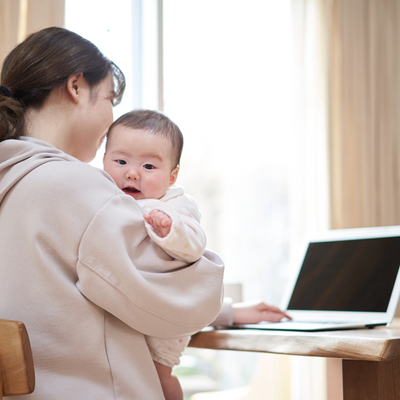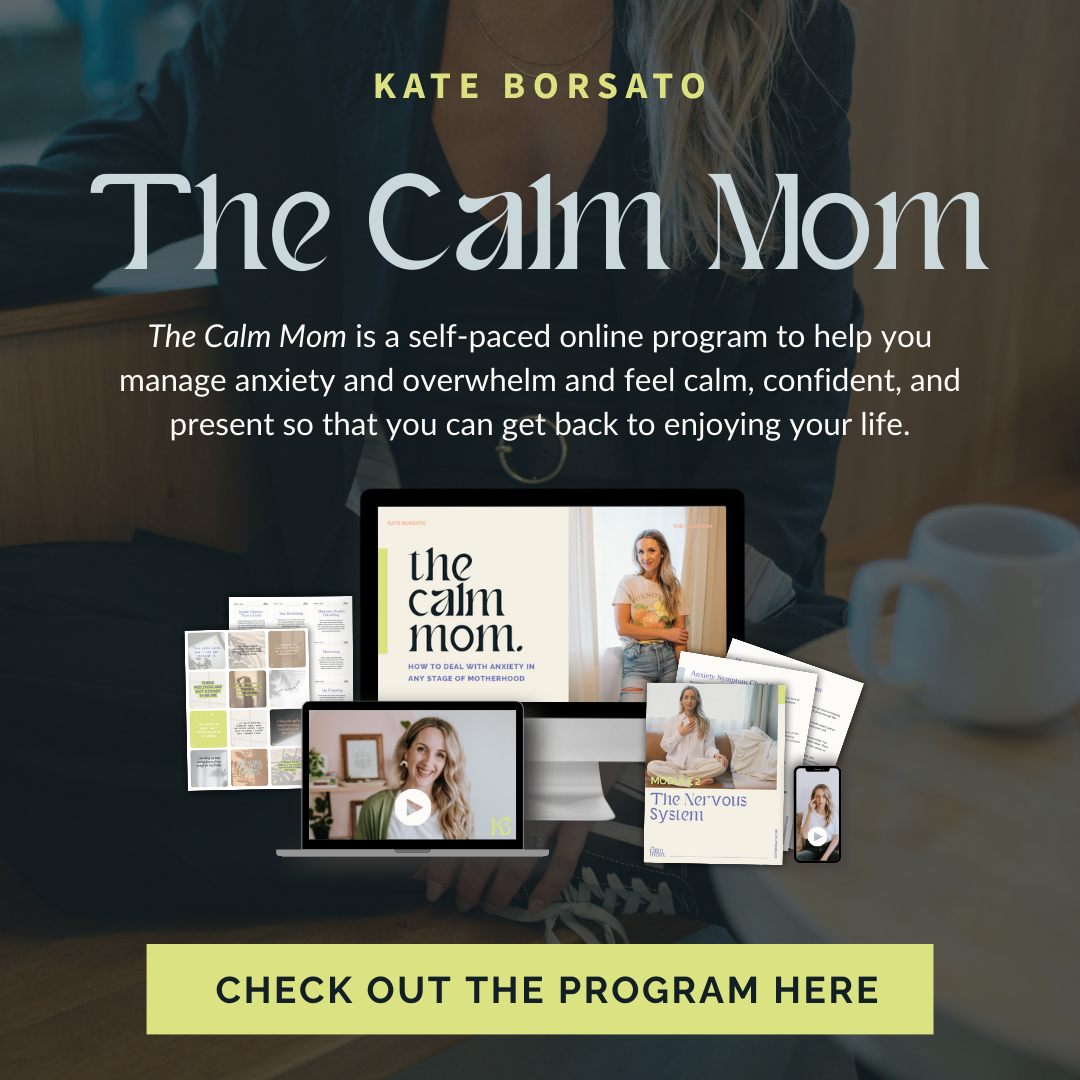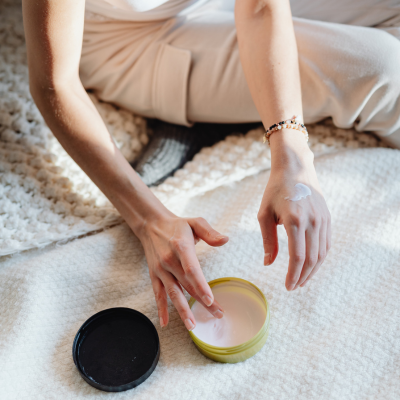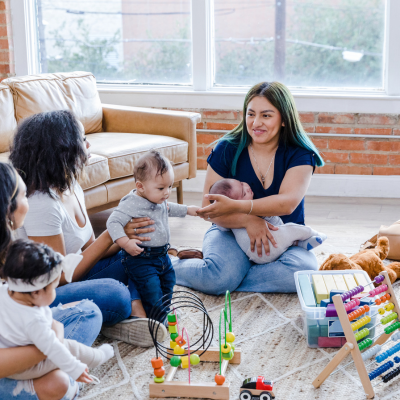How do I cope with anxiety when the threat is real? What’s the difference between anxiety that’s based on realistic and possible outcomes versus anxiety that is not.
Managing anxiety can be difficult under the best of circumstances. If you struggle with anxiety, you’ve probably had days where you’ve felt totally knocked off your feet or your thoughts have spiralled out of control. When you’re dealing with this mental health challenge (especially during the perinatal period or early motherhood), you’re likely experiencing more than just a case of butterflies in your tummy. Anxiety can lead to rage, insomnia, the inability to focus, intrusive thoughts, or just feeling physically unwell. Even high-functioning anxiety can cause self-doubt or low self worth.

If this is something that you’ve been struggling with a lot lately, then you’re probably at least aware of some of the tools you can use to bring your nervous system down and control anxiety. Oftentimes, you’ll hear about giving your anxiety a bit of a reality check. This can sound like, “Most of the things you’re worried about will never happen,” or “Is that fear actually realistic or are you just anxious?”
But what happens when your anxiety is based in reality and these arguments therefore aren’t valid?
In this post, I talk about the differences between anxiety that’s based on realistic and possible outcomes versus anxiety that is not, and how to cope when the threat is real.
When anxious thoughts aren’t based in reality
When you’re dealing with scary thoughts in motherhood (known as intrusive thoughts), OCD, you’re sleep deprived, or your nervous system is overwhelmed, your thoughts might focus on things that really aren’t all that likely.
For example, you may have a fear that someone will break in in the middle of the night… despite the fact that nobody ever has and your home is extra secure.
Or, you may have a compulsive need to clean the kitchen to avoid illness even though it’s always spotless and nobody in your family has experienced food poisoning from something they’ve eaten at home. Maybe, you have an intrusive thought about accidentally driving off a bridge with your kids in the car (as scary as it is, you know you’re not actually going to do that!).
Because these thoughts aren’t based on something that is likely to happen, it’s possible to de-escalate the anxiety with logic. For some people, it can be easier to let go of these worries in these situations because reason has a better argument than your worried, what if thinking.
Other times though, even if you can reason with anxiety, it’s not helpful. Anxiety will always find the loophole, and pull you into the debate over and over again.
Anxiety about very real threats
But what happens when your anxiety is triggered by something that isn’t so far-fetched? How can you control anxiety when it’s based on very real concerns? Sometimes anxiety is based on unlikely far-fetched worries, but other times, it’s a reaction to probable or realistically possible outcomes that we don’t want to be faced with.
Maybe you don’t even normally struggle with mood issues or anxiety but now, a situation that your family is dealing with has you awake at night, fretting throughout the day, quick to anger, or unable to focus on anything else. This is completely valid. This is also one of the most frequently asked questions that mothers in my community ask about.
Some of the most common anxieties rooted in realistic threats include:
- Anxiety about a recently diagnosed medical issue or condition
- Anxiety about real health threats like COVID, or RSV
- Fearing your abilities to deal with something like a disability or learning issue
- The stress of being pregnant again after a miscarriage
- Unease about finances and supporting your family after a job loss
- Wondering how you’ll cope during a time of extreme inflation
- Worrying about your child who is being bullied in school
- Worrying about children’s emotional wellbeing after the loss of a loved one
- Anxiety around the unknowns of divorce or separation
- Having to juggle turbulent co-parenting situations after a divorce/breakup
- Fearing threats to safety while they’re in school
- Worrying about threats that you face because of where you live (i.e. high crime rate, natural disasters, etc.)
How to cope:
First of all, if you’re relating to anything in the above list, your feelings are valid. Anxiety is always hard to sit with and that’s even more so the case when your thoughts are centred on something real, probable, or currently upon you. That’s not to invalid other forms of anxiety—like less-realistic intrusive thoughts —but it is to acknowledge that this is hard and you may need to rely on slightly different coping methods.
If this post has so far been describing your experience, consider the following coping tactics:
1. Practice tolerating uncomfortable things.
This is not the strategy that people typically want to hear about, I get that. We usually want to get rid of problems, and not feel pain. Of course that’s what we all want! But as yu know, like throws some curveballs, and sometimes these curveballs don’t go away, or at least not anytime soon. So what an you do then? A major part of anxiety management is learning to sit with the discomfort of the “threat” and more specifically, accepting that you don’t know what the future hold. Yeesh, so tough.
So let’s say your child has a medical condition that’s scary: how can you practise saying something like “yes this is so scary, and it’s so hard not knowing, and I can still be okay even with those fears.” Sometimes reminding ourselves of the human experience that almost always contains suffering can be helpful. “This is so hard, but I know I am not alone. I can handle this.”
Anxiety is really a doubt disorder, where we struggle to accept uncertainty and not knowing. The way through this is practising sitting in that uncomfortable feeling of not knowing what will happen, rather than trying to control or predict or avoid. All we can do is our best in any given moment. And the more we can accept uncertainty, the better our experience in this life will feel.
2. Control the controllable.
You’ve probably heard this piece of advice before, right? Anxiety lives in the future. It exists because of the unknowns or the uncertainty in your life and the fact that in many situations, you have no say about the outcome. Controlling the controllable, on the other hand, enables you to assess the situation to see what you do have power over. When you become determined to take charge where you can, you might be surprised by all the ways where you can influence how you deal with a stressful event. For example, no matter the source of the anxiety, you can always control:
- How you treat your body
- Whether or not you carve out adequate time for sleep and downtime
- Who you choose to socialize with (and whether or not you spend time with those who energize you instead of drain you)
- Whether or not your days include simple self-care
- If entertainment like books, the new, movies, and TV create a sense of calm rather than adding to the nervous energy
3. Set up a plan and avoid rumination.
When dealing with something complicated like a separation from your partner, a stressful financial situation or a scary diagnosis, it can be helpful to sit down and really think through a solid plan of action and stick to it. Think of it from all angles. Why is this the best way to manage this challenge? How will you communicate that with your family? What’s the biggest obstacle that could get in the way of executing this plan and how will you overcome it? How can you still focus on what’s important to you in life, even though this hard thing is happening?
Once you’ve thought through these questions, try to avoid ruminating. Ruminating is the action of overthinking, analyzing, and problem-solving on a loop. Even though it can *feel* productive, it isn’t. Ruminating just serves to take up more mental space, pull your focus back to the problem instead of to other things in your life, and it contributes to increased stress and burn-out.
You will need to learn how to notice when you’re ruminating, so that you can catch yourself in the act, and choose to focus on something different. Easier said than done, I know.
4. Sharpen your anxiety management tools.
Not all anxiety management tools work equally for everyone so you get to take the lead here and choose which one(s) you want to use to improve your experience. Some of the best methods to manage anxiety (many that you can learn in therapy or self-help courses) include: mindfulness, meditation, time in nature, exercise, creative practices, mantras, nervous system regulation skills, compassionate self-talk, and even daily journalling.
Managing anxiety and learning new mental habits isn’t something you master overnight though—it takes practice, patience, routine, and repetition. That’s why one way to protect your mental health while faced with difficult scenarios in life is to sharpen these anxiety tools by including them in your daily routine as much as possible. That light feeling you might get after a run may not happen the second day out but if you stick to it, a month from now that could become your lifeline. Similarly, setting an intention at the beginning of a morning yoga flow might not come naturally at first. By week two though, this could be the morning routine that sets the tone for your day.
5. Outsource support where possible.
Despite the stereotypes, we’re not meant to be the “mom who does it all.” (And honestly, can we just ban that term already?! It’s such an unrealistic standard and it just makes moms feel bad!) You’re not meant to do this all alone. You need help and it’s a sign of strength to ask for it.
That could mean reaching out to family and friends of course. It could also mean booking time to talk with your child’s teacher, finding the right specialists or doctors in the event of a medical issue, or finding a community of others who are going through the same thing you are. The value of feeling seen, validated, and supported by the right people isn’t to be underestimated.
If you’re dealing with a trauma, processing a difficult event, or generally anxious about real threats that are a risk to your family, there’s always support for that. My course, The Calm Mom, is my bestselling program for those who struggle with all kinds of anxiety. This is where you learn to recognize your anxiety and how (and when!) it shows up for you. As for those anxiety management tools mentioned in this article, this is where you learn them all so that you can choose which one(s) work best for you. Learn more here.









Comments +